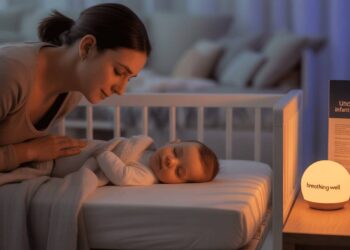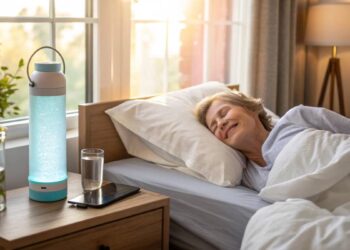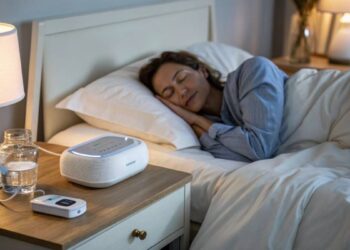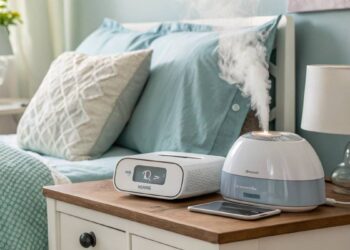Sleep apnea is more than just a snoring problem; it’s a serious sleep disruptor that can impact your health and well-being. Picture this: you drift off into blissful slumber, only to wake up gasping for air several times throughout the night. With two main types—obstructive sleep apnea (OSA) and central sleep apnea—understanding this condition is crucial. The good news is, recognizing the symptoms early could pave the way for effective treatments and a more restful night. Let’s explore the causes, challenges, and innovative solutions to this common sleep disorder, ensuring you never lose another night’s sleep to apnea again!
Key Takeaways
- Sleep apnea interrupts breathing during sleep, with obstructive and central types.
- Common symptoms include loud snoring, gasping, daytime sleepiness, and irritability.
- CPAP therapy is effective but can present discomfort and maintenance challenges.
- Alternatives include oral appliances, positional therapy, lifestyle changes, and innovative therapies like hypoglossal nerve stimulation and Provent therapy.
- Seeking professional advice is essential for tailored treatment options.
Understanding Sleep Apnea
What is Sleep Apnea?
Sleep apnea is what folks in the sleep biz call a heavyweight snooze interrupter. It’s when your breathing takes a breather, happening anywhere from a blink to a couple of minutes, and it might crash the party several times a night. The big bad version, obstructive sleep apnea (OSA), shows up when the throat muscles decide to take an unscheduled nap, blocking the air passage. Central sleep apnea, though less popular on the sleep disorder charts, steps in when your brain forgets to give a nudge to your muscles to keep breathing.
Got curiosity on the types of sleep apnea? We got you covered over here: central vs obstructive sleep apnea.
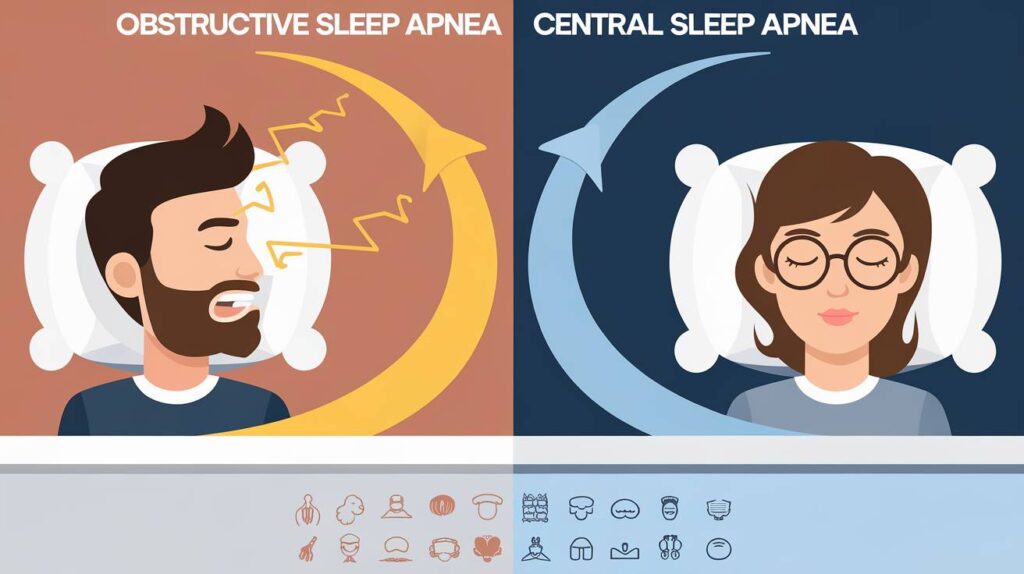
Common Symptoms of Sleep Apnea
Spotting the signs early can get you a fast pass to diagnosis and possibly reclaiming your much-needed shut-eye. So what’s the gossip on these symptoms?
| Symptom | Description |
|---|---|
| Loud Snoring | Your partner’s nighttime nemesis, often the signature of OSA. |
| Gasping or Choking During Sleep | These dramatic wake-up calls might have you sitting up in bed. |
| Excessive Daytime Sleepiness | If you’re nodding off at your desk, this might be your clue. |
| Difficulty Concentrating | Fuzzy focus and memory could be crashing your mental to-do list. |
| Morning Headaches | Waking up to your noggin throbbing, courtesy of nighttime oxygen struggles. |
| Irritability or Mood Changes | Cranky or gloomy? Sleep deprivation might be the real villain. |
If your nightly partner’s been eyeing you like you’re starring in a snore opera, it might be worth a chat with your health guru. Wondering about the pint-sized sleepers? Check out more in pediatric sleep apnea symptoms.
“Sleep apnea is a serious condition that shouldn’t be dismissed as mere snoring.”
Getting wise to these symptoms is your ticket to sniffing out treatments, including looking into various alternatives to CPAP to jazz up your sleep game. Wanna dig a bit more into what might be setting your sleep alarms off? We do deep dives here: what causes sleep apnea.
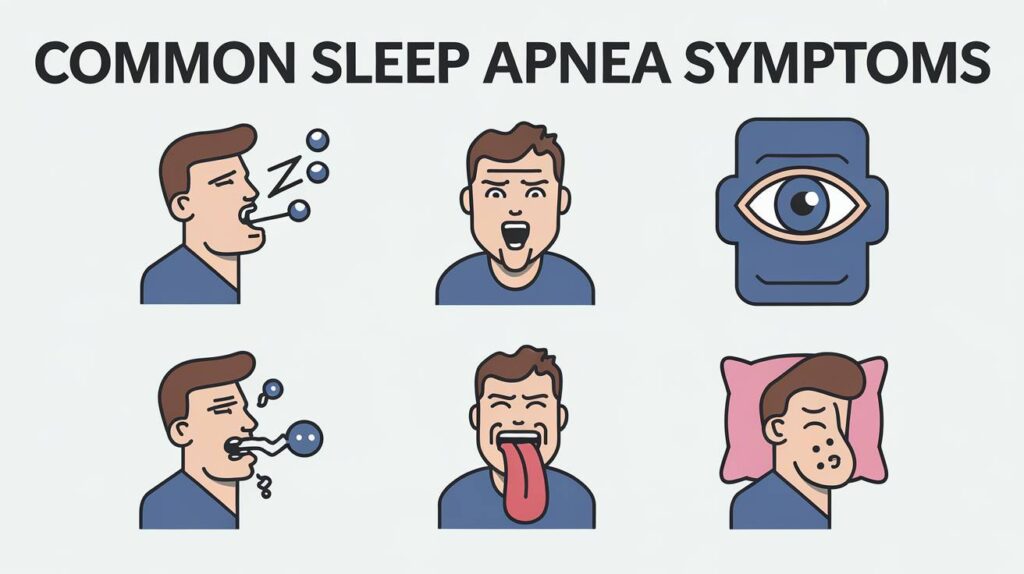
Challenges with CPAP Therapy
Overview of CPAP Therapy
Continuous Positive Airway Pressure (CPAP) therapy is a go-to solution for folks dealing with sleep apnea. Basically, it’s this nifty machine that keeps a steady flow of air pumping through a mask while you snooze. The aim? Keep those pesky airways open and kiss those awkward sleep interruptions goodbye. Many folks report catching Z’s like never before and feeling a whole lot healthier when they stick with the program.
But let’s not kid ourselves—CPAP therapy isn’t a walk in the park. Some bumps in the road can make folks rethink how they deal with CPAP or consider other options out there. Understanding the hiccups might help steer people toward alternatives to CPAP.
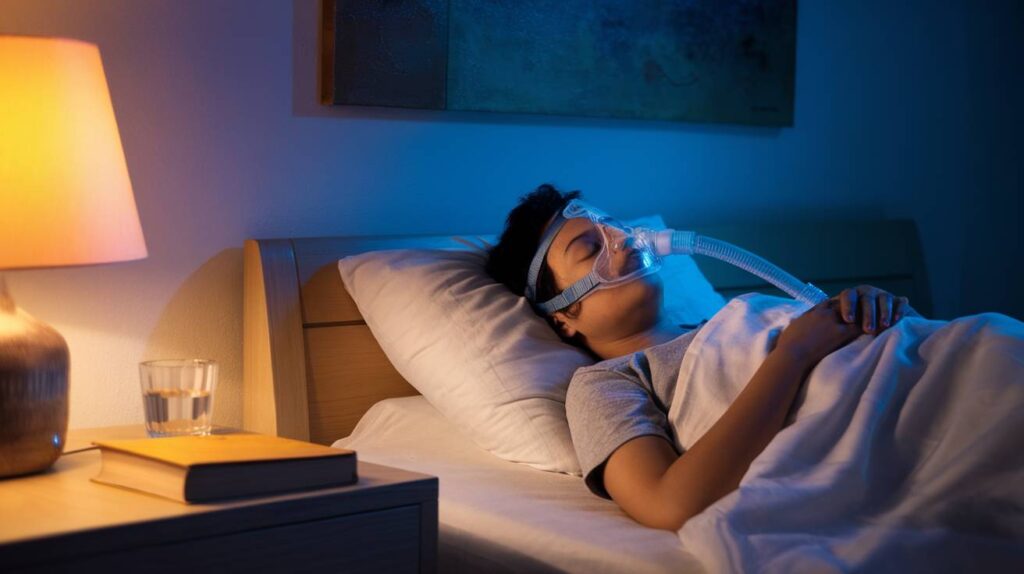
Common Issues with CPAP Machines
For all their good, CPAP machines can trip you up with a few issues. Here’s a quick glance at what’s bugging users:
| Issue | Description |
|---|---|
| Discomfort | The mask can feel like a real fuss, and some folks end up with cranky skin. |
| Noise | These machines can sound like a mini jet engine, keeping the user and anyone within earshot up at night. |
| Stigma | Imagine explaining that contraption in a shared crib—it’s enough to make anyone turn red. |
| Maintenance | Keeping these bad boys clean is no joke. Regular upkeep prevents health issues from rearing their ugly head (how to clean CPAP machine). |
| Air Pressure Issues | Dial the settings wrong, and you’re back to square one with the whole gasping-for-air routine. |
| Travel Complications | Lugging this gear around is no picnic, turning your travel hustle into a packing nightmare (traveling with CPAP machine). |
Sorting through these speed bumps matters for anyone using or thinking about diving into CPAP therapy. Easing these issues can boost how folks stick to treatment and maybe even make them less shy about sneaking a peek at other options. For more scoop on sleep apnea and its ins and outs, peep the pieces on sleep apnea symptoms and what causes sleep apnea.
Exploring Alternatives to CPAP
For folks looking to get a good night’s sleep without strapping on a CPAP machine, there are a bunch of ways to tackle sleep apnea. They each have their perks, so it’s really about finding what floats your boat.
Oral Appliances
Oral appliances are like your personal night-time heroes, shifting the jaw and tongue to keep that pesky airway wide open. They’re ace for folks with mild to moderate obstructive sleep apnea (OSA). Pop one in at night and wake up wondering where the freight-train snoring sound went.
| Type of Oral Appliance | How Well It Works | Comfy Level |
|---|---|---|
| Mandibular Advancement Device (MAD) | Pretty Good to Great | Depends on You |
| Tongue Retaining Device (TRD) | Decent | Kinda Comfy |
| Custom-Fit Oral Appliance | Top-Notch | Usually Cozy |
If you’re eyeing oral appliances, hit up a tooth genius who knows their stuff about sleep to figure out what fits just right. There’s more scoop on this in our piece on natural sleep apnea remedies.
Positional Therapy
Sometimes, it’s all about how you catch those Z’s. Some people find their sleep apnea flares up when they crash on their backs. Snoozing on your side might just cut those airway blockages and help you breathe easy.
Gadgets like special pillows or nifty alarms can nudge you to stay on your side. Studies show that if your sleep apnea is tied to your sleeping spot, this could make a big difference.
| Sleeping Spot | Apnea Odds | Suggested Gear |
|---|---|---|
| Back | High | None |
| Side | Low | Side Sleeper Pillow |
| Stomach | So-So | None |
Check out more about the best sleep position for sleep apnea.
Surgery Options
For the hardcore cases or when other tricks don’t cut it, going under the knife might be on the table. There’s a range of surgeries that can clear out or tweak the bits causing sleep apnea, like the throat tissue or tongue.
The hit rate of surgery success dances between different procedures and each person’s situation. Here’s the lowdown:
| Surgery Type | What It Does | Odds of Success |
|---|---|---|
| Uvulopalatopharyngoplasty (UPPP) | Sheds extra throat bits | 40-80% |
| Genioglossus Advancement | Shifts tongue muscle anchor | 70-80% |
| Maxillomandibular Advancement | Slides jaws forward | 90% |
Chat with a doctor before jumping into the operating room to weigh out what’s what. For a deeper dive into surgery outcomes, look into our article on sleep apnea surgery success rate.
Each CPAP alternative comes with its own set of ups and downs. Make sure to hash out your needs with your doc to nail down what’s going to lead you to dreamland smoother.
Lifestyle Changes for Sleep Apnea
Changing things up in your day-to-day can really help when you’re dealing with sleep apnea. Here’s the skinny on two big ones: getting your weight in check and moving it with some exercise.
“What works for one person may not work for another; a personalized approach is essential.”
Weight Management
When it comes to handling sleep apnea, those extra pounds can really weigh you down—literally. If you’re packing a bit too much, your airway might feel the squeeze, making it harder to breathe when you’re catching some Z’s. Shedding some of those pounds could ease up the pressure and cut down on apnea episodes.
Plenty of research has shown good things happen when you drop the weight. Check out what the science says:
| Weight Loss Percentage | Improvement in Sleep Apnea Symptoms |
|---|---|
| 5% | About a quarter (26%) drop in apnea episodes |
| 10% | Nearly half (43%) fewer episodes |
| 15% | 50% or more fewer episodes |
If you’re curious how slimming down can help with sleep apnea, check out our feature on does weight loss help sleep apnea.
Exercise and Physical Activity
Getting up and moving can also make a world of difference if sleep apnea’s messing with your vibe. Exercise not only helps keep your weight in check, but it beefs up your respiratory system too. We’re not talking about marathon training here; some moderate workouts can make a noticeable difference.
Here’s a list of exercises that can easily fit into your routine:
| Type of Exercise | Description |
|---|---|
| Aerobic Exercise | Walk, swim, or bike your way to better heart health. Shoot for about 150 minutes a week. |
| Strength Training | Lifting weights builds muscle, kicks up your metabolism, and helps shed pounds. Try this at least twice a week. |
| Flexibility and Breathing Exercises | Yoga or Pilates can improve flexibility and get you into that deep breathing rhythm, akin to better sleep quality. |
Need more ways to improve your sleep? Check out tips on natural sleep apnea remedies or the scoop on the best sleep posture for apnea.
Focusing on slimming down and moving your body can bring noticeable relief from pesky sleep apnea symptoms, offering other ways to feel better besides strapping on that CPAP mask.
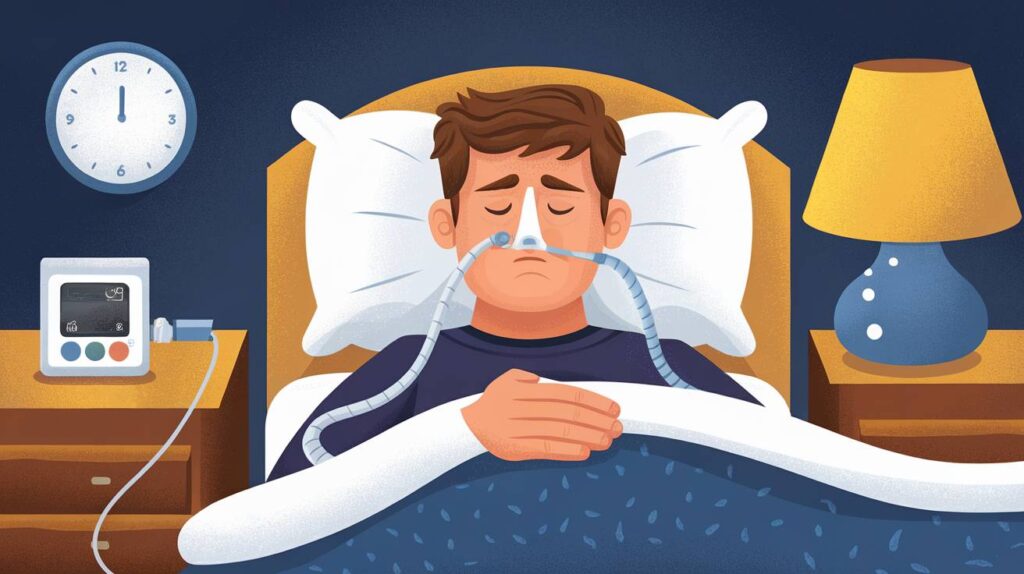
Innovative Therapies
These days, more people are looking for fresh takes on managing sleep apnea instead of using the usual CPAP machine. Two standout options are hypoglossal nerve stimulation and Provent therapy, each offering their twist on the whole breathing better while snoozing business.
Hypoglossal Nerve Stimulation
Think of hypoglossal nerve stimulation as a nifty gadget giving your tongue a friendly nudge to keep things clear while you catch some Z’s. A tiny device gets tucked in through a small surgery, stimulating the hypoglossal nerve that plays the puppet master for your tongue. This keeps your airway nice and open as you doze off.
Why folks are all about hypoglossal nerve stimulation:
| Feature | Description |
|---|---|
| Effectiveness | Many folks report a big drop in their sleep apnea events. |
| Minimal Fuss | A quick surgery and you’re good to go. |
| User-Friendly | You set it up before bed and tweak if needed. |
Before jumping in, patients typically get a good once-over to see if they’re a match. If you’re thinking of trying it out, a chat with your sleep doc is a good first step. For more signs of sleep apnea, swing by here: sleep apnea symptoms.
Provent Therapy
If you want to ditch machines, give Provent therapy a whirl. It’s a pair of stick-on nose devices that play pressure tag with your breath, keeping your airways wide open without any buzzing machines.
The lowdown on Provent therapy:
| Feature | Description |
|---|---|
| Super Easy | Stick them on and breathe easy, hassle-free. |
| Handy for Trips | Light and packable, perfect for those on-the-go nights. |
| No Plug Needed | Leave the clunky equipment behind. |
For those who find the CPAP deal uncomfortable or a pain, Provent therapy might be your answer. Interested in going more natural? Check out our insights on natural sleep apnea remedies.
With all these new therapies rolling in, sleep apnea sufferers have an ever-expanding toolkit of CPAP alternatives. Always wise to consult with healthcare professionals to choose what fits best for personal health needs.
Seeking Professional Advice
Trying to figure out the best way to deal with sleep apnea can feel overwhelming. Getting the right help matters a lot for achieving better sleep. Folks who notice signs of sleep apnea should think about getting in touch with specialists or healthcare providers to discover alternatives to the usual CPAP therapy.
Consulting a Sleep Specialist
If you think you might have sleep apnea, hitting up a sleep specialist is a smart move. They’re the people with the know-how to dig deep into your sleep issues, usually kicking things off with a home sleep apnea test or a clinic visit. They’ll figure out your deal by checking for stuff like loud snoring, pauses in breathing while you snooze, and being extra tired during the day, which are common sleep apnea symptoms.
But they don’t just stop at what’s wrong—they’ll also look into what might be causing your sleep to go haywire. A big part of their job is telling the difference between central vs obstructive sleep apnea and suggesting treatments that fit, like oral gadgets or other tricks.
Discussing Options with Your Healthcare Provider
Not a fan of CPAP therapy? Chatting with your healthcare provider can shed some light on what else you can do. It might be as simple as trying lifestyle changes, like trimming down a bit, which can really help with sleep issues—weight loss and its effect on sleep apnea is something worth talking about.
They might introduce you to new therapies that fit your specific needs, including the surgical route, to help figure out if the success rate for sleep apnea surgery is a match for your health background.
With such a team approach, it’s also a good idea to get the partner of the snorer and parents of kids who might have sleep troubles involved. Grasping how sleep apnea can affect family life, along with lifestyle tweaks and preventive steps like spotting pediatric sleep apnea symptoms, makes handling it that much better.
Whether you choose a sleep doc or your go-to healthcare provider, getting their input is key for folks looking to go beyond the CPAP basics and step up their sleep game.
Main Tips
- Monitor sleep patterns and recognize symptoms early.
- Explore both CPAP and alternative treatments with your healthcare provider.
- Maintain a healthy weight and stay active to improve respiratory function.
- Educate yourself about new therapies and seek professional guidance frequently.
Final Thoughts
Sleep apnea is a multifaceted condition that significantly impacts quality of life, making awareness and timely intervention crucial. Whether you choose CPAP therapy or explore innovative alternatives, the path to restful sleep is within reach. By understanding the symptoms and causes, and consulting with healthcare professionals, you can take actionable steps toward better sleep health. It’s time to reclaim your nights and awaken refreshed and ready to embrace the day ahead!
Conclusion
In navigating the complex landscape of sleep apnea, knowledge is your best ally. Understanding the nuances between obstructive and central sleep apnea is fundamental, as is recognizing common symptoms that prompt action. While CPAP therapy remains a well-established treatment, its discomfort can lead many to explore alternatives such as oral appliances or positional therapy. Lifestyle changes, including weight management and consistent exercise, can vastly improve symptoms, offering a natural path to better sleep. Emerging therapies like hypoglossal nerve stimulation or Provent therapy are promising for those seeking options beyond traditional methods. Consulting with a sleep specialist or healthcare provider is crucial. Their expertise will help tailor an effective treatment plan that meets your specific needs, ensuring you reclaim restful nights and vibrant days ahead. Your journey towards better sleep doesn’t have to involve a mask—explore the many options and discover what works best for you!
FAQs
What is sleep apnea?
Sleep apnea is a disorder causing repeated interruptions in breathing during sleep, affecting both health and quality of rest.
What are the symptoms of sleep apnea?
Common symptoms include loud snoring, gasping or choking during sleep, excessive daytime sleepiness, and irritability.
What is CPAP therapy?
CPAP therapy uses a machine to deliver continuous air pressure to keep the airways open during sleep, helping to reduce apnea episodes.
What are the alternatives to CPAP therapy?
Alternatives include oral appliances, positional therapy, lifestyle changes, hypoglossal nerve stimulation, and Provent therapy.
How can I find a sleep specialist?
You can search online or get a referral from your primary care doctor to find a qualified sleep specialist.




